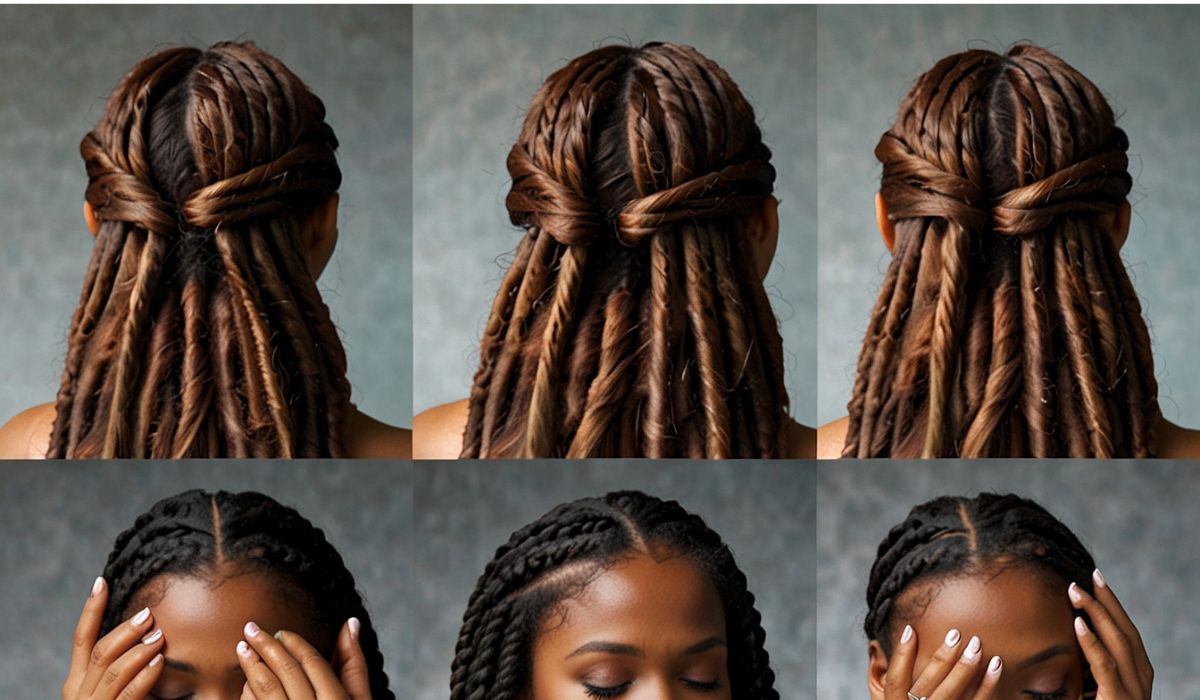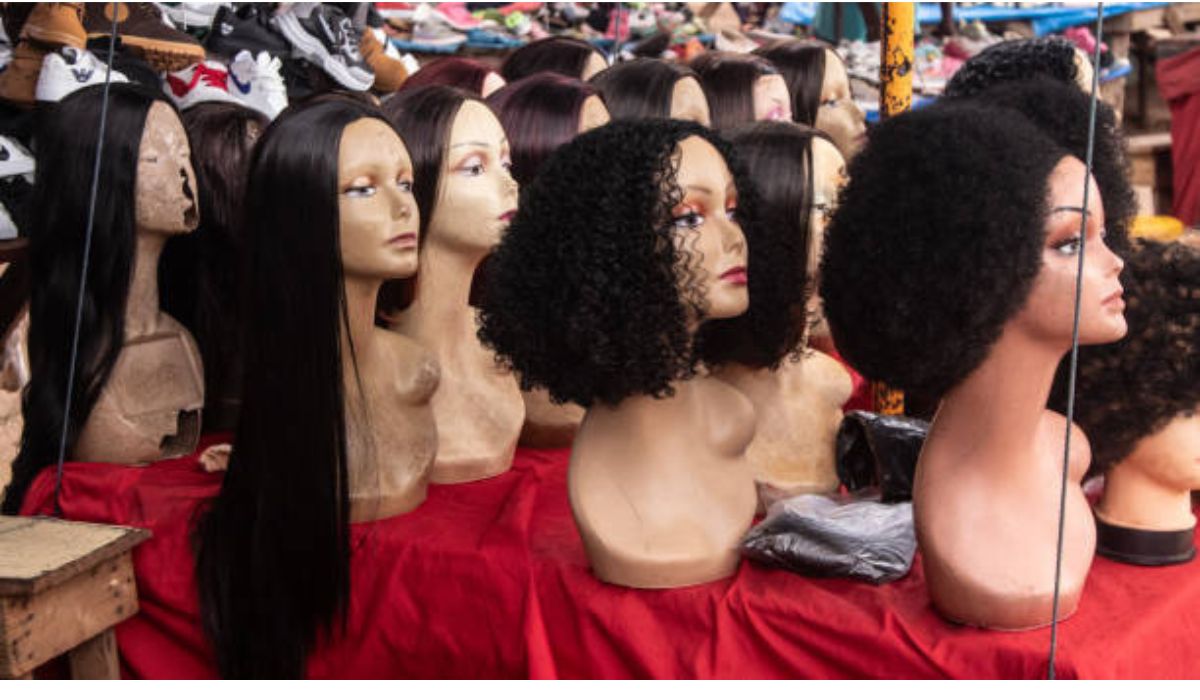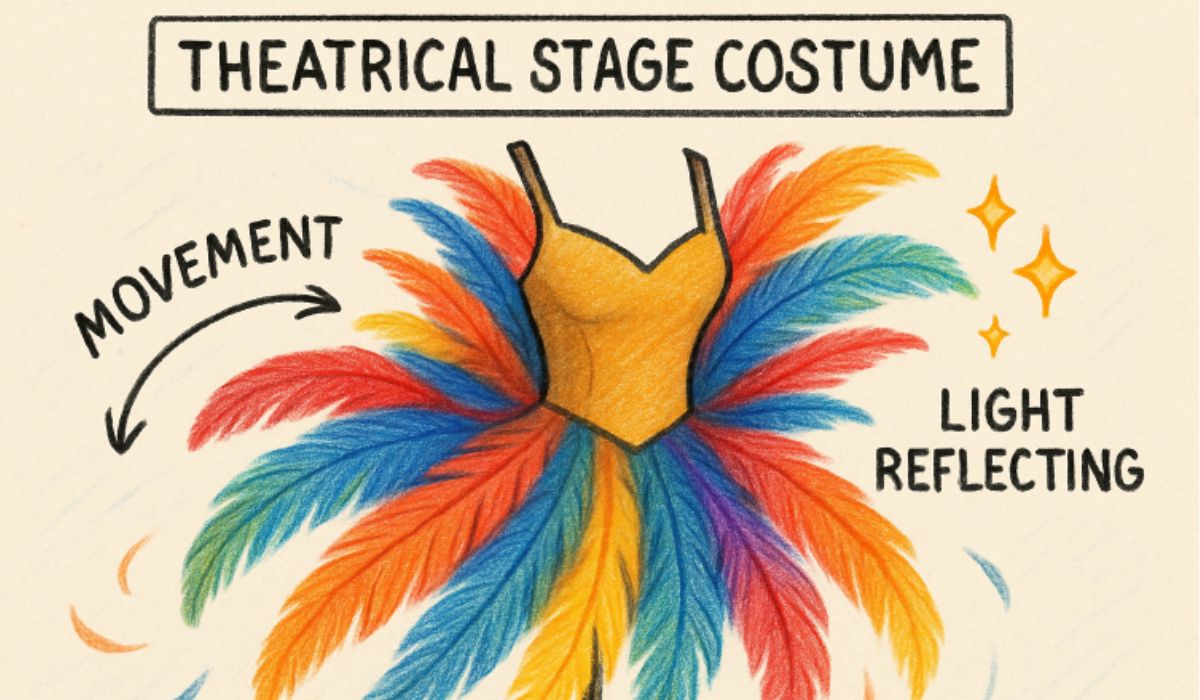Fashion
Cuban Twist Hairstyle: Your Complete Guide to Style & Care

Ever wondered how some people achieve that perfect blend of rugged texture and effortless cool in their hair? The secret might just be the Cuban twist. This iconic style isn’t just a hairstyle; it’s a statement of confidence and cultural flair. But what exactly goes into creating and maintaining those perfect, springy coils?
In this guide, we’ll unravel everything you need to know, from the chair at your barbershop to your daily routine at home. Get ready to transform your look.
Understanding the Cuban Twist Hairstyle
At its core, the Cuban twist is a type of two-strand twist that creates a defined, rope-like pattern. It’s known for its versatility and texture, offering a look that’s both neat and full of personality. Think of it as the stylish cousin of cornrows and dreadlocks.
People often love this style because it’s low-maintenance compared to some other braided styles, yet it delivers a high-impact look. It works beautifully on various hair types, especially hair with a natural curl or coil, as it enhances the hair’s inherent texture.
- Key Characteristics:
- Rope-Like Definition: Each twist is distinct and uniform.
- Volume and Body: The style has a wonderful fullness to it.
- Versatility: You can wear Cuban twists short, long, parted, or even styled into a man bun.
A Step-by-Step Guide to Getting Cuban Twists
You can get this done by a professional, but with a bit of practice, it’s also a style you can tackle at home. Here’s how it’s typically done.
What You’ll Need:
- A fine-tooth comb
- Hair clips for sectioning
- A quality leave-in conditioner or twisting cream
- Hair gel or edge control (for neat parts)
- A spray bottle with water
The Process:
- Start with Clean, Prepared Hair: Your hair should be freshly washed and conditioned. While it’s best to work with damp (not soaking wet) hair, as it’s more pliable and will hold the twist pattern better.
- Section Your Hair: This is the most important step for a clean look. Using the tail of your comb, create neat, straight parts. The size of your sections will determine the thickness of your twists. Smaller sections give you more, thinner twists. Clip away the hair you aren’t working on yet. The chart below shows the different sectioning patterns and the final look they create.
- Apply Your Product: Take a small amount of twisting cream to one section. Work it through from root to tip to ensure every strand is coated. This provides hold, reduces frizz, and adds moisture.
- Begin Twisting: Split the section into two equal strands. Now, simply twist them around each other, as if you’re braiding but with only two pieces. Twist in one consistent direction—either both clockwise or both counter-clockwise. Continue twisting all the way down to the ends of your hair.
- Secure the End: You can simply twist the end to a point, or use a small rubber band if your hair is particularly slippery.
- Repeat: Move methodically through each section until your entire head is complete.
Read also: The Insider’s Guide to Finding Cheap Wigs That Look Real
Common Mistakes to Avoid with Your New Hairstyle
Even with the best intentions, a few missteps can shorten the life of your style. Here’s what to watch out for.
- Skipping the Deep Condition: You might wonder if this step is really necessary. Dry, brittle hair leads to breakage and a frizzy look. A deep conditioning treatment before twisting strengthens your hair and makes the style last longer.
- Twisting Too Tight: It’s easy to think tighter is better, but this can cause traction alopecia—a fancy term for hair loss from excessive tension. Your scalp should feel comfortable, not painful.
- Using the Wrong Products: Heavy gels or waxes can cause buildup and flaking. Opt for lightweight, moisturizing creams instead.
- Neglecting Your Edges: Be gentle around your hairline. Use a soft brush and a little edge control to style this delicate area without pulling.
Keeping Your Twists Fresh: A Maintenance Routine
So, you’ve got your amazing new twists. How do you keep them looking sharp for weeks?
- Nightly Care: Wrap your hair with a silk or satin scarf, or sleep on a satin pillowcase. This reduces friction, which is the main cause of frizz and messy twists.
- Daily Refreshing: A light spritz of water and a leave-in conditioner mix in a spray bottle can revive your twists. Gently scrunch them to reactivate the product and redefine the curls.
- Washing Your Twists: Yes, you can and should clean your scalp! Dilute your shampoo with water in an applicator bottle and gently massage your scalp. Rinse thoroughly. Avoid vigorous scrubbing of the twists themselves.
- Oil Your Scalp: Use a lightweight oil (like jojoba or argan oil) to moisturize your scalp between washes, applying it directly along your parts.
Styling Variations to Try
Don’t get stuck in a rut! Your Cuban twists are a fantastic base for other looks.
- The High Top Fade: Keep the twists on top long and lush while fading the sides short. It’s a classic, sharp look.
- The Man Bun: Gather your longer twists into a stylish, textured bun.
- Side-Swept Style: Create a deep side part and let your twists cascade to one side for a dynamic effect.
3 Key Takeaways for Your Best Twists Ever
- Preparation is Everything: Healthy, moisturized hair is the foundation of a great twist-out. Don’t skip the deep conditioner.
- Consistency is Key: A simple nightly routine with a satin scarf is the single biggest thing you can do to maintain your style.
- Listen to Your Scalp: If it hurts, it’s too tight. Healthy hair starts with a healthy scalp.
Ready to rock this timeless style? What’s the first Cuban twist look you’re going to try?
FAQs
Q1: How long do Cuban twists last?
With proper care, Cuban twists can last anywhere from 2 to 4 weeks. This depends on your hair type, your activity level, and how well you maintain them.
Q2: Can you get Cuban twists with straight hair?
Yes, but it requires texturizing the hair first. A stylist will often use a technique or product to add grip, as twists hold best on hair with some natural texture or wave.
Q3: What’s the difference between Cuban twists and Senegalese twists?
Cuban twists are two-strand twists, creating a rope-like effect. Senegalese twists are a similar style but created with a three-strand braiding technique, often resulting in a slightly different, more intricate texture.
Q4: Do twists damage your hair?
Not when done correctly. Avoid excessive tension, especially at the roots, and don’t keep the style in for too long. Giving your hair a break between protective styles is crucial for long-term health.
Q5: What hair is used for Cuban twists?
They can be done with your own natural hair. For added length or volume, stylists often use kanekalon or other synthetic hair that matches your texture and desired look.
Q6: How do I take down my twists without breakage?
Be patient! Start by carefully snipping off any added hair. Then, saturate your twists with a detangling conditioner or oil and slowly unravel them with your fingers, working from the ends up to the roots.
Q7: Can I swim with Cuban twists?
Yes, but it’s best to protect them. Wear a swimming cap, and always rinse your hair with fresh water immediately after swimming to remove chlorine or salt.
You may also like: Inexpensive Wigs Near Me: A Local Buyer’s Guide
Fashion
Inexpensive Wigs Near Me: A Local Buyer’s Guide

Ever had one of those days where you look in the mirror and think, “I need a change, but my wallet isn’t on board?” You’re not alone. Maybe you want to experiment with a new color without the commitment, or perhaps you’re dealing with hair loss and need an affordable solution that makes you feel like you again. The good news? That perfect, budget-friendly transformation is closer than you think. The quest for amazing, inexpensive wigs near me is a journey we can embark on together, and it doesn’t have to be confusing or expensive.
Let’s ditch the overwhelm and dive into the practical, local spots where you can find a gorgeous wig that feels as good as it looks, without the financial hangover.
Why Buying Local for Inexpensive Wigs is a Game-Changer
In our digital age, it’s tempting to just click “add to cart.” But when it comes to wigs, buying locally offers some serious advantages that online stores simply can’t match. Think of it as trying on a pair of jeans versus just guessing your size. The fit is everything.
- The Try-On Factor: You can feel the texture, see the true color in natural light, and, most importantly, try it on. Does it fit your head comfortably? Does the color complement your skin tone? These are questions you can only answer in person.
- Instant Gratification: No waiting for shipping, no worrying about porch pirates. You can walk out of the store the same day with your new look securely in hand.
- Expert Help (Sometimes): While not every big-box store employee is a wig connoisseur, smaller specialty shops often have staff who can offer valuable advice on fit and style.
- Support Local Business: You’re putting money back into your community, which is always a feel-good bonus.
Where to Hunt for Inexpensive Wigs Near Me: Your Local Treasure Map
So, where do you actually start looking? Your town is likely hiding several goldmines for affordable wigs. Let’s break down the most common spots.
1. Beauty Supply Stores: The Go-To Spot
Stores like Sally Beauty, Beauty Alliance, or even your regional local beauty supply are often the first stop for wig shoppers. They are fantastic for inexpensive wigs near me because they cater to a broad audience.
- What to Expect: A wide aisle or section dedicated to wigs, usually in sealed packages. You’ll find everything from synthetic braiding hair to pre-styled fashion wigs.
- Pros: Huge variety of brands (like Outre, Sensationnel, and Model Model), frequent sales, and accessible prices.
- Cons: The help can be hit-or-miss, and you might need to be assertive about finding a mirror and trying them on.
2. Big-Box Retailers: The Surprising Contender
Never underestimate the power of Walmart, Target, or CVS. Especially around Halloween, but often year-round in the beauty or “ethnic hair care” section, you can stumble upon some surprisingly decent and very cheap synthetic wigs.
- What to Expect: Basic, fun wigs. They are perfect for a costume party or for experimenting with a wild color (like pastel pink) without a big investment.
- Pros: Extremely low cost, super convenient.
- Cons: Limited style and fiber quality; not designed for long-term, daily wear.
3. Costume & Party Stores
While Spirit Halloween is seasonal, many local party stores operate year-round. Their wig selection is, as you’d expect, geared toward costumes, but that doesn’t mean you can’t find a fun, short-term style.
- What to Expect: Bright colors, quirky styles (think retro beehives or neon mullets).
- Pros: Great for one-off events and bold statements.
- Cons: Quality is generally low, and the fibers can be less realistic.
4. Mall Kiosks and Small Boutiques
Keep your eyes peeled in shopping malls. You’ll often find kiosks or small stores that specialize in wigs, hair extensions, and accessories. These can be a mixed bag, but they sometimes offer a more curated selection.
- What to Expect: A more personal shopping experience. The vendor might be more knowledgeable and allow you to try on several styles.
- Pros: Potential for better service and unique finds.
- Cons: Prices can be higher than at beauty supply stores, so you need to be a savvy negotiator.
To help you visualize your options, here’s a quick comparison:
| Store Type | Average Price Range | Best For | Try-On Policy |
| Beauty Supply Store | $30 – $80 | Everyday wear, style variety | Usually allowed |
| Big-Box Retailer | $15 – $40 | Costumes, quick experiments | Varies, often not |
| Costume Shop | $20 – $50 | Themed parties, fun looks | Sometimes allowed |
| Mall Kiosk/Boutique | $50 – $150+ | Personalized service, unique finds | Almost always allowed |
Read also: Webfreen.com Fashion: Your Guide to Affordable & Sustainable Style
Your 5-Step Game Plan for Shopping Inexpensive Wigs Near Me
Walking into a store without a plan can be overwhelming. Follow this simple checklist to ensure you walk out a winner.
- Do a Quick “Wig Prep” Online: Before you even leave the house, hop on Google Maps and search for “inexpensive wigs near me.” Check the store hours and skim the reviews. A quick call to ask “Do you have a good selection of synthetic wigs in stock?” can save you a trip.
- Know Your Head Size: Most wigs come in “average” size, but if you know you have a smaller or larger head, look for brands that offer petite or large caps. This is a crucial step many beginners miss.
- Bring a Friend and a Headscarf: A second opinion is invaluable. Also, pulling your hair flat under a wig cap (which stores often sell) or a thin headscarf makes trying on wigs much easier and gives you a more accurate idea of the fit.
- Inspect the Wig Like a Pro: Don’t just look at the style. Feel the fibers—heat-friendly synthetic fibers are a major plus. Look at the cap construction inside. A monofilament top or a lace front, even on a budget wig, will look far more natural.
- Don’t Be Shy—Try It On! This is the most important step. Put it on, adjust the straps, and look in a mirror. Move your head around. Does it feel secure? Does the hairline look realistic?
Busting the Myths: The Truth About Cheap Wigs
There’s a common misconception that “inexpensive” means “cheap-looking.” That’s simply not true anymore. Wig technology has come a long way.
- Myth 1: All Synthetic Wigs Look Shiny and Fake. While some do, many modern synthetic fibers are designed to have a low-luster, realistic look that mimics human hair.
- Myth 2: They’re Uncomfortable. A proper fit is key. With adjustable straps and breathable caps, many inexpensive wigs are surprisingly comfortable for all-day wear.
- Myth 3: You Can’t Style Them. While you can’t heat-style basic synthetic wigs, you can still use low-heat tools on heat-friendly synthetics. Plus, you can cut and layer them to better frame your face.
Your Next Steps to a New Look
Finding the perfect, inexpensive wigs near me is totally within your reach. You now have the local map and the insider knowledge to shop with confidence.
- Start your search today. Pick one store from the list above and make a plan to visit.
- Go in with an open mind. You might fall in love with a style you never expected.
- Remember the tips: Bring a friend, try everything on, and don’t settle for anything that doesn’t make you feel fantastic.
Your new favorite hair is waiting for you just around the corner. Happy wig hunting! We’d love to hear about your finds—share your experience and your new look in the comments below!
FAQs
Q1: What’s the difference between a $30 wig and a $150 wig?
The main differences are the fiber quality, cap construction, and realism. A $150 wig might have a hand-tied lace front for a natural hairline and be made of higher-quality, longer-lasting synthetic or even human hair. However, a $30 wig from a good brand can still look amazing, especially if it has features like a monofilament part or is heat-friendly.
Q2: Can I cut and style my inexpensive synthetic wig?
Absolutely! Trimming the bangs or layering the ends to suit your face shape is one of the best ways to make a budget wig look custom and expensive. Just use sharp hair shears and go slowly. For basic synthetics, use only steam or very low heat from a blow dryer on a cool setting for styling.
Q3: How long will an inexpensive synthetic wig last?
With proper care, a good synthetic wig worn regularly can last 3-6 months. This depends on factors like how often you wear it, the environment you’re in, and how well you maintain it (e.g., washing with wig-specific shampoo).
Q4: Are there any specific brands I should look for?
Yes! Brands like Outre, Sensationnel, Model Model, and It’s A Wig are widely available in beauty supply stores and are known for producing high-quality, stylish synthetic wigs at accessible price points.
Q5: What should I do if the wig looks too bulky or big on me?
This is common. You can take it to a professional stylist who works with wigs for a custom trim and thinning. Alternatively, you can carefully pluck a few hairs from the part line to make it look more natural and use the adjustable straps inside the cap to create a snugger fit.
You may also like: The Insider’s Guide to Finding Cheap Wigs That Look Real
Fashion
How Filing for Chapter 7 Bankruptcy Can Offer a Fresh Start

Understanding Chapter 7 Bankruptcy
Chapter 7 bankruptcy, often referred to as “liquidation bankruptcy,” provides an option for individuals burdened by unsecured debt to have qualifying debts discharged under the supervision of a bankruptcy trustee. While non-exempt assets may be sold to pay creditors, many filers can keep most of their belongings thanks to legal exemptions. This process aims to help truly insolvent individuals regain their financial footing while still allowing creditors the chance to get some repayment through liquidated assets. Most filers emerge from Chapter 7 free from major unsecured debts.
Eligibility Requirements
To ensure that the complete debt relief provided by Chapter 7 is reserved for those who truly cannot afford to repay their debts, applicants must pass a stringent means test. This test compares your monthly income for the six months prior to filing against your state’s median income for a household of similar size. If your income falls below the median, you generally qualify.
If your income is above the state median, further calculations consider your monthly expenses and disposable income to determine eligibility. Those with sufficient disposable income may be directed toward Chapter 13 instead, which requires a repayment plan. Because accuracy in documenting income and expenses is crucial, consulting a bankruptcy lawyer Rockland can help ensure all details are correctly handled and improve your chances of a smooth filing process.
The Bankruptcy Process
- Credit Counseling: Federal law requires a credit counseling session with a government-approved agency within 180 days before filing for bankruptcy. This session assesses your financial situation and explores alternatives to bankruptcy.
- Petition Filing: The core of your case is a comprehensive petition that you submit to the bankruptcy court. It includes detailed disclosures of all assets, liabilities, income, and recent financial transactions.
- 341 Meeting (Meeting of Creditors): Around a month after you file, you’ll attend the 341 meeting, where the trustee and any creditors can ask questions about your finances. This step helps verify the accuracy of your filing.
- Financial Management Education: Completing a debtor education course is required before your debts are discharged.
- Debt Discharge: Typically, three to six months after filing, eligible debts are wiped away by court order, marking the end of the Chapter 7 process for most filers.
Automatic Stay Provision
One of the most immediate forms of relief is the “automatic stay.” This provision goes into effect the moment you file, halting most legal actions by creditors. Collection calls, wage garnishments, repossessions, and even foreclosure proceedings are suspended. The automatic stay grants debtors vital breathing room, offering time to organize their finances under the protection of the court.
Discharge of Debts
The primary benefit of Chapter 7 bankruptcy is the discharge of unsecured debts, including credit card bills, medical expenses, and personal loans. However, not all debts are eligible for discharge—most student loans, recent taxes, child support, and spousal support generally remain your responsibility.
Impact on Assets
A common misconception about Chapter 7 bankruptcy is that claimants lose all their assets. In truth, both federal and state exemption laws protect essential belongings, allowing filers to retain items such as cars, basic household furnishings, and retirement accounts, with home equity protected up to certain limits. It is crucial to understand state-specific exemptions to evaluate potential asset risks. While non-exempt property may be liquidated to pay creditors, most Chapter 7 filers, especially those with experienced legal representation, typically retain their assets with minimal losses.
Rebuilding Credit Post-Bankruptcy
A Chapter 7 bankruptcy will remain on your credit report for up to 10 years, but it does not mean the end of your financial health. In fact, for many, it’s the start of a better, more responsible relationship with credit. Proven strategies include applying for a secured credit card, making on-time payments every month, keeping your overall credit use low, and regularly monitoring your credit report for errors and progress. Many individuals experience a notable improvement in their credit scores within two years, particularly when negative debt is removed from their credit report.
Seeking Professional Guidance
The bankruptcy process is filled with technical requirements, deadlines, and difficult choices. Experienced legal counsel not only increases your chances of a favorable outcome but also reduces stress by offering clarity and direction at every juncture. A seasoned attorney will ensure compliance with all rules and help you prepare for every stage, from petition to discharge.
YOU MAY ALSO LIKE: crypto30x.com News: Your Trusted Compass in the Chaos of Cryptocurrency
Fashion
How Feathers Influence Costume Design in Performance Arts

Designers utilize feathers to enhance costumes, creating dynamic visual effects that elevate storytelling and emotional impact during performances. The choice of feather types, reflecting sustainability and ethical sourcing, aligns with a cultural shift toward responsible fashion in the arts. Feathers also possess cultural significance, adding layers of meaning that connect performers and audiences beyond mere decoration, thus serving as powerful storytelling elements.
Feathers are a dynamic element in costume design, shaping the visual and symbolic language of performance arts across the globe. With their shimmering texture, natural iridescence, and mesmerizing motion, feathers help designers create unforgettable stage moments. Not only do they bring scenes to life visually, but feathers—such as rooster feathers—offer versatility in form, from dramatic fans and headdresses to subtle, intricate embellishments. This adaptability allows for costumes that respect tradition while embracing contemporary flair.
The Visual Impact of Feathers in Costumes
Feathers add texture, movement, and drama on stage, reflecting light and catching the audience’s eye. Costume artists use their aerodynamic and reflective qualities with ancient and modern techniques. Feathers like ostrich, marabou, and rooster are flexible and luminous, perfect for fans, capes, or headdresses that convey grace and motion. In fast dance styles, feathers produce rhythmic ripples, emphasizing beats and emotion. Their shapes can elongate a figure, imply flight, or mimic animals, engaging both sight and imagination.
Cultural Significance of Feathers in Performance
Feathers symbolize cultural meanings in global traditions. Indigenous ceremonies, like Apache rites, see feathers as symbols of ancestry, spiritual power, and status. Costumes with eagle or hawk feathers connect to the divine or nature. In Mesoamerican and African traditions, feathered attire signifies rank, heritage, or transitions between spiritual or communal states. Western stagecraft also uses feathers for status and spectacle; feathered masks in Venetian carnivals or plumed hats in Renaissance times reinforced societal roles and narrative. Modern costume designers incorporate these cultural symbols for authenticity and storytelling, evident in opera and musical theater.
Sustainability and Ethical Considerations
Sustainability is transforming the costume design industry, with the ethical sourcing of feathers becoming the new industry standard. Leading designers choose naturally molted or farmed feathers from humane sources. Synthetic and recycled feathers offer cruelty-free, realistic options. Large productions follow environmental guidelines to meet demand for responsible stagecraft. This trend is shown by the use of traceable materials and transparent supply chains, with theater companies sharing commitments to sustainability and encouraging audience awareness of costume ethics.
Design Techniques and Material Choices
Innovative costume design fuses traditional craftsmanship with modern engineering, utilizing natural feathers for authenticity in culturally significant pieces, while synthetic feathers provide durability and weather resistance. Designers commonly blend both types to meet practical and aesthetic needs. The layered construction of feathered costumes enhances depth and movement, with recent advances, such as laser-cut fabric and flexible adhesives, enabling complex 3D effects that surpass traditional techniques.
Modern Applications in Performance Arts
Feathers are still key in modern performance, from ballet like ‘Swan Lake’ to burlesque, Broadway, circus, and pop shows, creating spectacle and fantasy. Designers like Bob Mackie push boundaries with feathers in Vegas and TV. Collaborations now focus on using feathers’ movement—rustling and sweeping—to boost storytelling. Feather accessories and headpieces make a lasting impact and support sustainability through innovative design, shaping the future of live performances.
Conclusion
Feathers in costume design weave together visual excitement, cultural meaning, and responsible artistry. Their enduring role in performance arts reminds us that the materials we choose both reflect and shape the stories we tell. By combining creative vision with ethical consideration, today’s costume designers ensure that the expressive power of feathers continues to enchant, engage, and inspire audiences worldwide.
YOU MAY ALSO LIKE: Style on a Budget: How Xuebaotou.com Delivers Quality Shoes for Less
-

 Tech10 months ago
Tech10 months agoExplore iZoneMedia360 .Com Features & Benefits
-

 Celebrity10 months ago
Celebrity10 months agoWho Is Andrew Santino Wife? The Full Story
-

 Entertainment10 months ago
Entertainment10 months agoRemembering Melanie Olmstead Yellowstone’s Unsung Hero
-

 Uncategorized10 months ago
Uncategorized10 months agoPrairie Dog Guide: Habitat, Behavior, and Conservation
-

 News10 months ago
News10 months agoHowling Mine vs. Time-Tearing Morganite: A Strategic Card Comparison
-

 Apps & Games10 months ago
Apps & Games10 months agoThe Pizza Edition Games: A Perfect Slice of Fun and Flavor
-

 Business10 months ago
Business10 months agoHow Influencersginewuld Shapes the Future of Branding
-

 Celebrity10 months ago
Celebrity10 months agoA Deep Dive into Jeremy Allen White Movies and TV Shows





